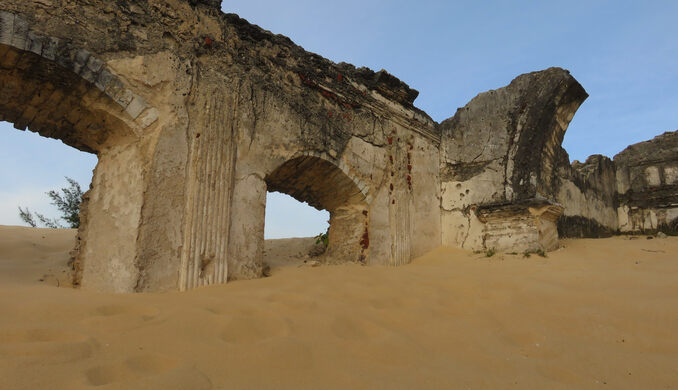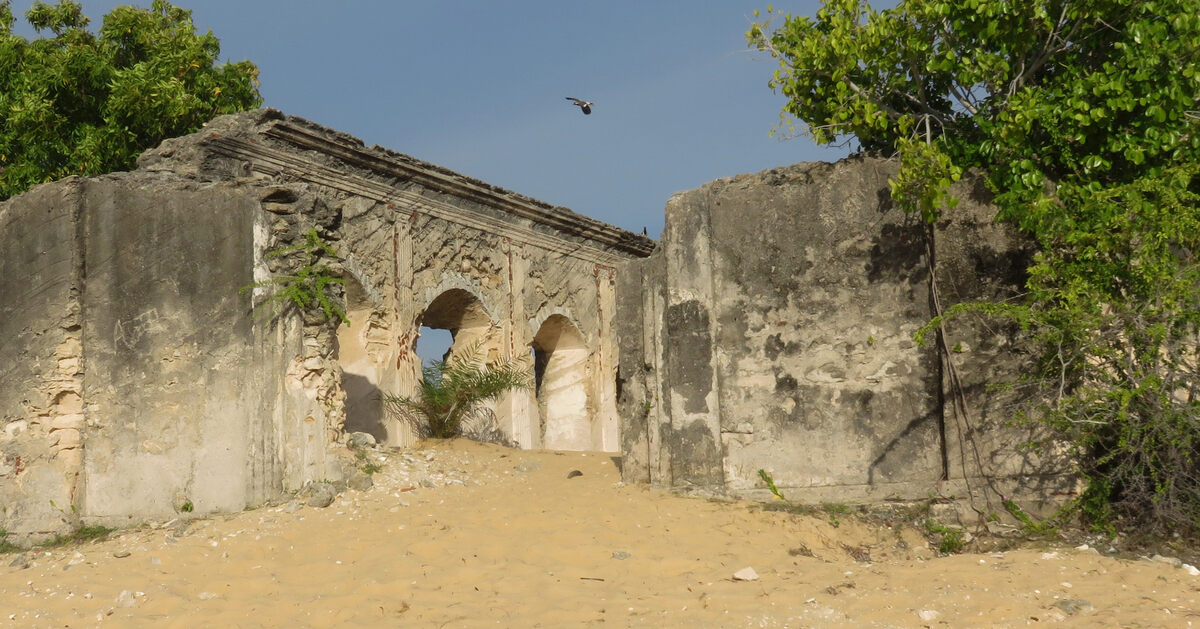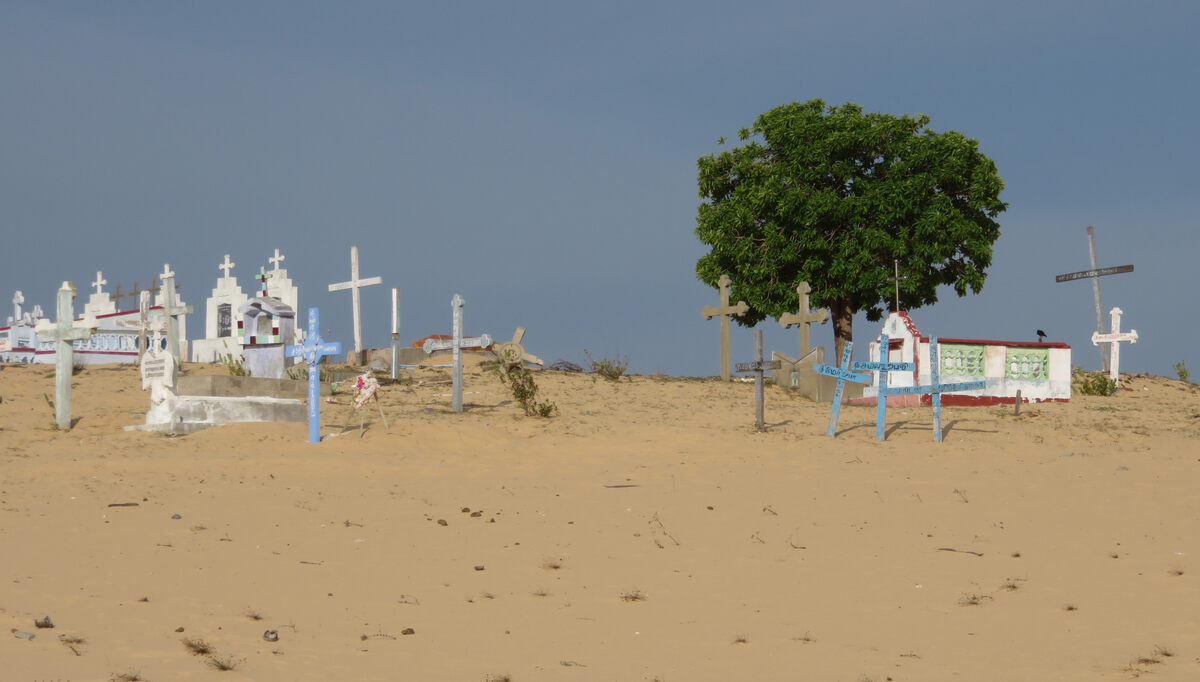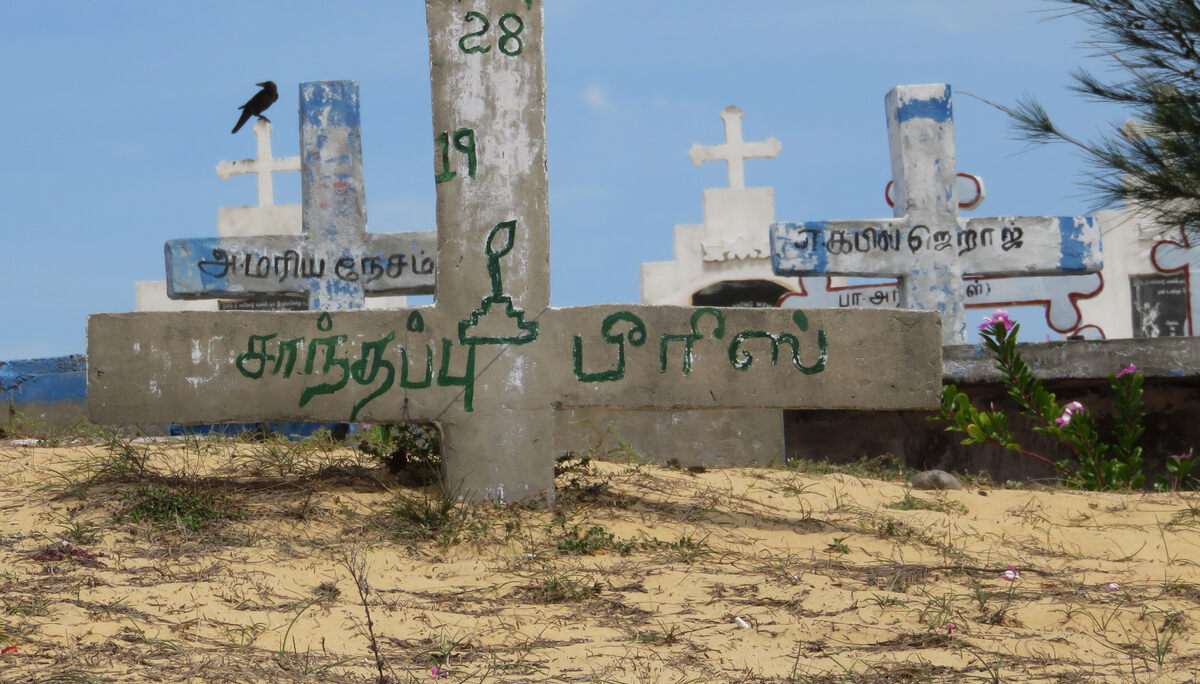The ruins of this old church are slowing sinking into the sand.
by Max Cortesi, Atlas Obscura, no date, accessed May 12, 2018

Walls of the old St. Anthony’s Church being eaten by sand
On the far northeastern beaches of Sri Lanka there is a tiny village called Manalkadu. It doesn’t see many tourists—and with only one battered unnamed road to get there, that’s not surprising. What is surprising, once you do arrive, is finding the ruins of a once-majestic church, and a collection of modest graves nearby, watching as the walls are slowly eaten by sand.

The old church may go back to the days of 17th century Dutch rule
The crosses are the graves of local residents, many of whom were among the thousands of Sri Lankans who lost their lives in the 2004 tsunami. As with the church walls, the dunes around the graves are always shifting, the sand revealing either too much or too little of what’s buried below.
The history of Sri Lanka goes back at least 3,000 years, to the days of the ancient Silk Road. Until 2014 it was difficult to get a visa to visit the area of the old St. Anthony’s, but tourism has since opened up as the political and economic conditions in Sri Lanka have improved. The sands, always shifting.
Know Before You Go

Other accounts put the date around 1900, when Sri Lanka was the British colony known as Ceylon
The ruins and cemetery are along the beach just north of the small village of Manalkadu, about 6 miles from the town of Point Pedro. It is on the Jaffna peninsula at the very northern tip of the island. Many of the area roads are unnamed, so you can set your GPS to the coordinates up top.
Note that there is a new, rebuilt St. Anthony’s in the village, not to be confused with the ruins. Also, there are reports from some tour sites that the beaches around Manalkuda are patrolled by the army. Check with local tourism authorities or agencies as to current access and any restrictions for visitors.

Cemetery at the top of the dunes – many of the graves came in the wake of the 2004 tsunami
https://www.atlasobscura.com/places/saint-anthonys-church-and-cemetery
